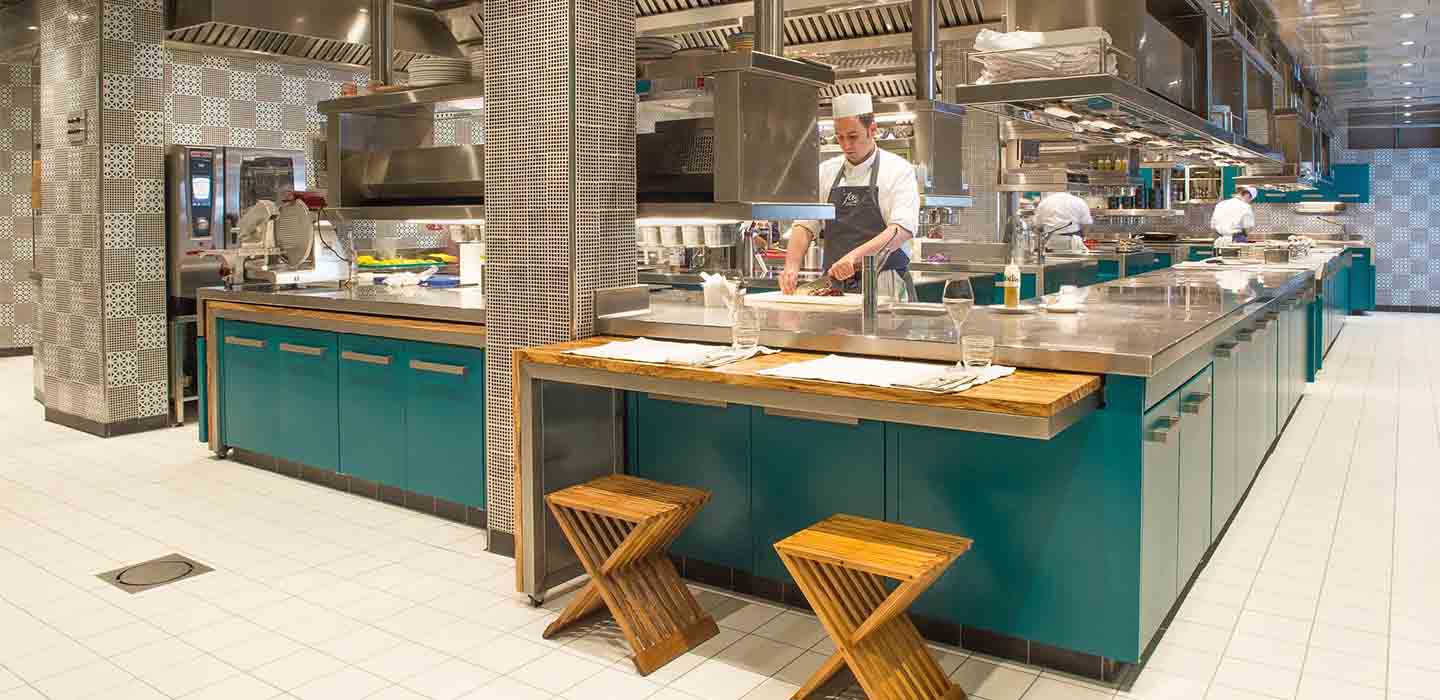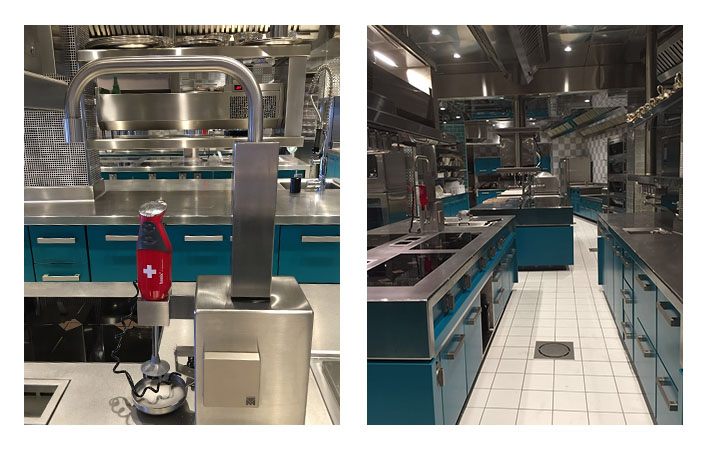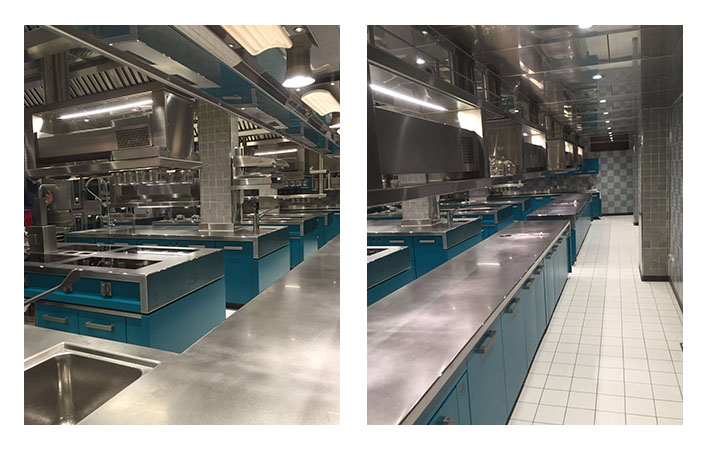Foods, journeys, tales of chefs and more
Vito Cinque and the San Pietro of Positano - past and future, all inside one dream.
What could you dream if you are already the owner of a dream? With this question in mind, we interviewed Vito Cinque, owner of the San Pietro restaurant, to know what pushed him towards the desire of having one of the best kitchens in the world in one of the best hotels in the world.
Vito Cinque, with his brother Carlo, is the owner of one of the stars of Italy’s tourism sector. The international jet set and the narrow circle of culture and economy at a planetary level step into the San Pietro of Positano; those who know and have the opportunity to appreciate what is most beautiful and rare in the world panorama passes from here at least once in a lifetime.

Besides being a refined hotelier, Vito Cinque is also a visionary and courageous restaurateur. The kitchen of the San Pietro restaurant was restructured in 2016 to become a world-famous example of architecture and design for professional environments. It is a space dug into the rock, where the chef Alois Vanlangenaeker operates together with his brigade, designed and realized by Marrone and organized with state-of-the-art technology. Just think of the ozone sterilization that daily disinfects every surface, and the continuous cycle system that makes total self-production and waste recycling its cornerstone.
We met him more than a year after completing the kitchens crafted by Marrone to ask him a few questions about his project. We wanted to present the man behind the entrepreneur, the dream behind the challenge.


Marrone: Good morning, Vito. Prominent international newspapers, both general and from the sector, highly speak of your San Pietro and its cuisine. However, the most important question remains for us: why? What prompted you and your brother to undertake a renovation that could be said to have set a remarkable precedent?
Vito Cinque: We have been hospitality entrepreneurs for three generations. We are in one of the most beautiful places in the world. At a certain point, we wondered what we could do to not just walk in the footsteps of those who have preceded us. We believed that the best way to honor those who built all this, handing it down to us was to try to bring forward their work, making it bigger if possible. It is not a matter of competition with the past; it is a matter of responsibility toward the past, towards tradition, and towards the sacrifice and generosity of those who have built our present. The greatness of those who came before us deserved this dream, deserved the determination to build what we considered as the best cuisine in the world.
Then there is another element: almost all our staff and employees have been with us for a very long time. This is not a rare thing in Italy, given the importance we give to personal and family relationships even in working contexts. It is something that must be managed, and when it’s time, also celebrated. On the one hand we wanted to give everyone a new challenge, to spur our workgroup to do a business that would leave a mark; on the other hand we also wanted to gratify those who work with us, building a context that was the best also for all those aspects that concern those who work there, starting from the most immediate things like the healthiness of the environment, to end up with those less obvious, like the sensations that generates working in that same environment.
Marrone: At this point, may we ask what ‘the best kitchen in the world” means to you?
Vito Cinque: It is clear that this may sound like a risky statement, but we had clear enough ideas about what defined the best kitchen in the world.
First of all, we wanted a safe environment; then an efficient environment; finally, a beautiful environment. Each of these elements has its own series of declinations.
Safe means a place where it is possible to work with maximum productivity and minimum risk, it means safe for us who work in it, but also for the community and the environment, with a consumption control of energy, emissions, and substances used for cleaning. It is all part of our two primitive ideas: to celebrate those who have preceded us, to gratify who is on our side. The respect for the environment that we have received from previous generations is one with the respect of the tradition that we represent and is projected in the future through the transmission, to those who will come after, of a world better than we found it. To reward those who work with us means providing them with an operating environment with healthy air, which can be used, managed and cleaned without ever using hazardous methods and substances or in any way limiting the quality of life.
An efficient environment is one that allows you to operate better with minimum effort, and this applies to both culinary operations and, for example, to the use of energy and resources. Even here, the two things match, where we are able to structure a system of work on a human scale, reducing, at the same time, the environmental impact.
A nice environment is an environment that puts in the frame of mind, in the right mental order. This applies to those who work and those who take advantage of the kitchen as guests, and the two dimensions are still those of the gratification of those who work and the celebration of those who have preceded us: offering our guests a visual show, an aesthetic work, as contour to a culinary experience that we always want impeccable, we intended to affirm the uniqueness of this place, its nature as generator of unforgettable moments. By putting ourselves and our collaborators in this context, in the same way, we wanted to insert them and insert ourselves in an environment where it was pleasant to be, where not only the creativity could flourish, but also the mood with which one perceives the work was the right one. We often forget that cooking is also art, experimentation, transformation and that these things are best done in stimulating environments.
Marrone: Would you like to tell us about some details of the kitchen that you have installed?
Vito Cinque: I would start from the last point we discussed. Professional kitchens are often monochromatic, emotionally aseptic environments. In our case, color plays a fundamental role. We chose hand-painted majolica tiles from Vietri, produced by a company that boasts more than 400 years of history. The lines developed by Marrone shape the space, combining form and function in a unique way. Stepping into our kitchen is like stepping into a state of mind, not just into a work environment. A considerable amount of what is in the kitchen is made in Italy, and here returns the concepts of beauty, functionality, to aim for the best and to celebrate tradition.
The construction made with smooth surfaces, with hidden functionalities, allows cleaning with essentially no use of chemicals of industrial origin. I could tell you that the detergent that we use the most is water and vinegar, so we do not breathe solvents or other processing residues, nor do we spill it in water or scatter it in the air.
Air and water are areas for which respect is once again valid both inwards and outwards: an air treatment unit ensures that the worker always moves in an environment free of fumes and discharges and that the reintroduction into the environment is made at a substantial zero impact. 3 points of incoming water and 3 refluxes guarantee separate water cycles, which prevent water waste and allow for the treatment of each cycle (hot, cold, decalcified water) in an appropriate way.
We have built a work environment in which each individual has his counter, specifically designed for the tasks he performs, equipped to the function and with every tool at hand; we asked for a system that could allow us operational flexibility and you have designed for us a system of shelves that can be adjusted in height through electronic controls: this makes it possible to work without size constraints on each workstation, while maintaining the maximum accessibility of the instrumentation; in essence, we have available a modular space according to the operating requirements of the moment. To achieve this result, instead of duplicating mechanisms and tools we have sought simplification through centralization of common functions: imagine that the kitchen has 46 refrigerators, but only a central motor that powers them, thus reducing consumption and emissions. To give you an idea, also thanks to a consumption control device, the entire system can work with 140 kW. Similar systems of this size would require at least 790 kW.
Marrone: What did it take to complete this challenge?
Vito Cinque: My brother Carlo and I traveled far to find a supplier able to give shape to our vision. Then it took a constant and personal commitment. Dreams are not free, and challenges are so-called because they are not easy. I have personally taken care of the entire process. It took 24 hours a day of work for 5 months, 2 engineers, the management of 1600 points of electrical and hydraulic contact. A vision was essential, and the ability to rely on experts, but also a lot of stubbornness: we never accepted a “no” that did not have a good reason, and always only after considering all solutions, even the most unlikely.
Marrone: How you feel today when you enter the kitchen of the San Pietro?
Vito Cinque: Like someone who has given shape to a vision, which for a third-generation entrepreneur is a bit like saying who has fulfilled his destiny. And this, beyond words, is not a foregone thing, nor is it simple.
Modulo di integrazione con Mailchimp